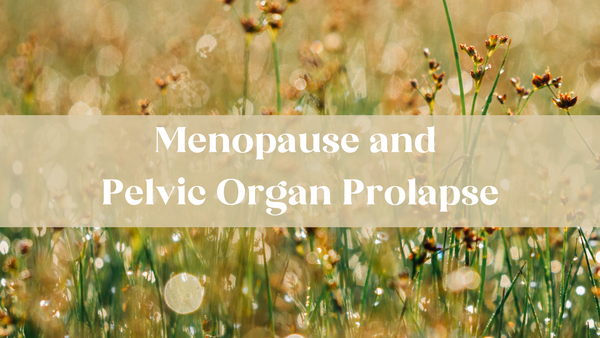Menopause and Pelvic Organ Prolapse
As we go throughout our lives, our bodies are constantly changing. If we are lucky enough to experience the milestones that come with living a long life, we will sooner or later experience the physical changes that come with aging. While pelvic organ prolapse (POP) is often talked about as a condition that occurs following childbirth, it can also present at other points throughout a person’s life, including menopause. In fact, prolapse is most common during the later stages of postmenopause, and some estimates suggest that around half of women ages 50-79 have some degree of prolapse (but the actual number may be much higher).
Let’s take a closer look at why pelvic organ prolapse commonly occurs during this life stage. Our hope is that this information, along with information about treatment and management options, will help provide you with a better understanding of how to navigate POP during and after menopause.

Why does POP often occur during menopause?
The answer has a lot to do with hormones–specifically, estrogen, which drops significantly during menopause. Estrogen plays a key role in keeping the pelvic floor muscles strong and elastic, so changes in estrogen levels can mean changes to the pelvic floor. According to The University of Colorado’s Urogynecology department, “the lack of estrogen during menopause thins the support structures and tissue that hold pelvic organs in place, causing them to fall.”
For some people, the strain of childbirth initially weakens the pelvic floor muscles, but the onset of menopause causes them to become symptomatic for the first time. These symptoms can be similar to the ones that are often reported after childbirth: pain in the lower back or pelvic region, the feeling of a bulge in the vagina (that may or may not be visible), and difficulties using the restroom. Sometimes, the symptoms appear only during certain activities, such as exercise, and sometimes they are apparent throughout the day.
What can you do about POP during menopause?
No matter when POP occurs, it’s important to remember that it is a manageable condition, and there are things you can do to decrease your symptoms and improve your quality of life. When discussing your symptoms with your healthcare provider, they may recommend treatment options including:
- Pelvic floor physical therapy: Working with a physical therapist who specializes in pelvic floor health can provide physical, emotional, and mental support and guidance. It is worth nothing that you do not have to wait until you have a problem to visit a pelvic floor physical therapist. Like many other things with your health, it is worth being proactive if possible to understand what is going on with your body and what might be helpful now and in the future.
- Hormonal treatments: Since decreasing estrogen levels can be a cause of prolapse during menopause, healthcare providers often prescribe hormonal treatments to help alleviate symptoms and restore strength to the pelvic floor tissues. These treatments can include tablets, creams, or vaginal rings. There are different types of hormonal therapies available and each has different risks, so it is important to differentiate between the different types and talk with your healthcare provider about the benefits and risks.
- Support garments or pessaries: While support garments help alleviate symptoms by providing structure from outside the body, pessaries are devices that are inserted into the vagina that help support the tissue from the inside.

At Hem Support Wear, we believe that you deserve to feel empowered in every step of your pelvic health journey–no matter when your journey begins. Use the share buttons below to help us spread the word about pelvic floor health and normalize the conversation.
**Medical Disclaimer: This post is intended to provide information and resources only. This post or the information contained within should not be used as a substitute for professional diagnosis, treatment, or advice. Always seek the guidance of your qualified healthcare provider with any questions you may have regarding your healthcare, conditions, and recommended treatment.


